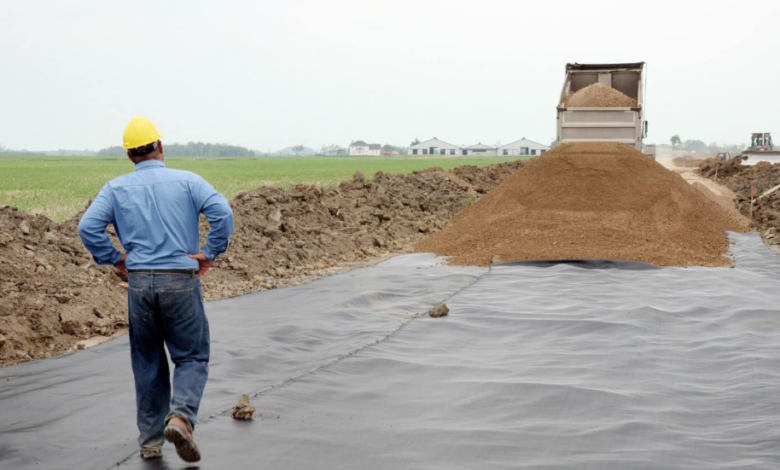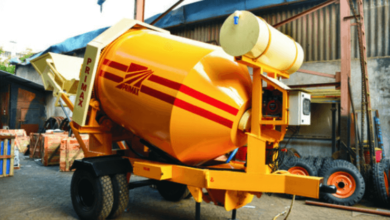Geotextiles: The Backbone of Modern Civil Engineering

As infrastructure around the world faces increasing demand for strength, durability, and sustainability, innovative construction materials have become more crucial than ever. Among these, geotextiles stand out as a highly versatile solution for geotechnical, civil, and environmental engineering challenges.
From highways to coastal protection, geotextiles are quietly revolutionizing the way engineers design and build.
What Are Geotextiles?
Geotextiles are synthetic fabrics used in civil engineering and environmental applications to interact with soil, rocks, or other construction materials. These materials are typically made from polymers such as polyester or polypropylene and are designed to be permeable, strong, and durable.
The term “geotextile” originates from combining “geo” (earth) and “textile” (fabric), emphasizing its use in soil-related projects. These fabrics may be woven, non-woven, or knitted, depending on their intended use.
See also: Why Choose a 32oz Stainless Steel Water Bottle?
Primary Functions of Geotextiles
Geotextiles perform multiple essential functions in construction and geotechnical engineering. The most common include:
1. Separation
This ensures structural stability, especially in road construction where maintaining layer integrity is essential.
Types of Geotextiles
Woven Geotextiles
These are made by weaving fibers together in a specific pattern. They are known for their geotextiles high tensile strength and are ideal for applications where reinforcement is required.
Common Uses:
- Road stabilization
- Rail track support
- Erosion control
Non-Woven Geotextiles
Non-woven geotextiles are produced using bonding processes such as needle punching or heat fusion.
Common Uses:
- Subsurface drainage
- Landfill lining
- Riverbank protection
Knitted Geotextiles
Less common, knitted geotextiles are created by interlooping yarns. They combine the properties of both woven and non-woven types but are typically custom-designed for specialized applications.
Applications Across Industries
Geotextiles are used in a wide range of sectors, demonstrating their adaptability and functionality:
Road Construction
This prevents rutting and increases the road’s lifespan.
Landfills and Environmental Protection
Geotextiles are key components in modern landfill systems. They protect liners, aid in leachate drainage, and improve containment of hazardous materials.
Coastal and River Engineering
They play a major role in erosion control projects. Placed under rocks or gabions, geotextiles prevent soil loss while allowing water to flow naturally.
Agriculture
Geotextiles support irrigation, prevent soil erosion, and suppress weed growth.
Railways
In rail systems, geotextiles stabilize the track bed and prevent mixing between ballast and subgrade materials, which enhances track performance and reduces maintenance.
Benefits of Geotextiles
Choosing geotextiles in construction offers multiple advantages that go beyond just mechanical performance:
- Durability: Withstand harsh weather, heavy loads, and chemical exposure.
- Cost Savings: Reduce maintenance and repair costs over time.
- Eco-Friendly: Enhance sustainable construction through reduced material usage and soil conservation.
- Adaptability: Available in various thicknesses and strengths to suit diverse applications.
Factors to Consider When Selecting Geotextiles
Selecting the right geotextile is crucial for project success. Here are key considerations:
- Load Requirements: Heavier loads require stronger, woven types.
- Permeability Needs: For drainage, higher permeability is a must.
- Soil Conditions: Soil texture and composition affect how the fabric will interact with the ground.
- Exposure: UV-resistant options are necessary for applications where the fabric is exposed to sunlight.
- Chemical Compatibility: Geotextiles should withstand chemicals present in the soil or drainage water.
Innovations in Geotextile Technology
With rapid advancements in material science and engineering, geotextiles are becoming more efficient and specialized:
Smart Geotextiles
These are embedded with sensors that detect stress, moisture, or strain. They provide real-time data on infrastructure health and performance.
Biodegradable Geotextiles
Made from natural fibers like jute or coir, these are ideal for short-term applications where the fabric is intended to decompose after fulfilling its purpose.
Geotextile Composites
These combine geotextiles with geomembranes or geonets, creating multifunctional layers that offer enhanced drainage, filtration, and barrier functions.
Challenges in Using Geotextiles
Despite their numerous advantages, some challenges exist:
- Clogging: Fine soil particles can block the pores, especially in filtration applications.
- Installation Errors: Wrinkles or improper overlaps can compromise effectiveness.
- UV Degradation: Long-term sunlight exposure can reduce lifespan unless UV-protected materials are used.
- Punctures and Tears: Sharp objects or heavy equipment can damage the fabric if not properly installed or protected.
Proper planning and quality control can minimize these risks significantly.
Sustainability and Environmental Impact
As environmental regulations become stricter, geotextiles are being recognized for their contribution to sustainable construction. They help reduce soil erosion, conserve resources, and enhance the longevity of infrastructure, thus reducing the carbon footprint associated with repair and reconstruction.
Recyclable and biodegradable geotextiles are also gaining popularity, further supporting eco-friendly development initiatives.
Conclusion
Their ability to perform multiple roles—reinforcement, filtration, separation, and protection—makes them invaluable in both large infrastructure projects and small-scale landscaping efforts.
With continued innovation, geotextiles are set to play an even bigger role in shaping resilient, sustainable, and cost-effective infrastructure. Whether it’s a road, a landfill, or a riverbank, using the right geotextile can dramatically enhance performance while protecting the environment.




